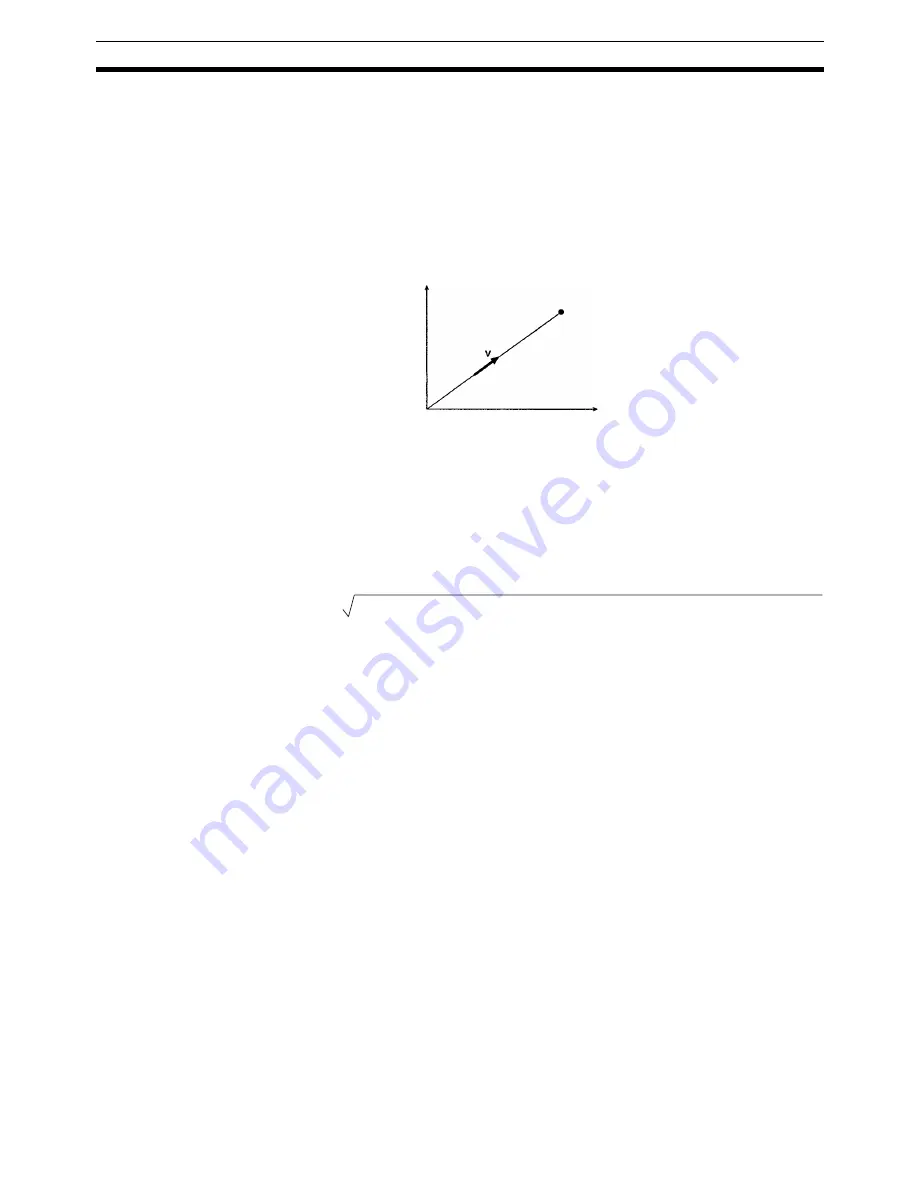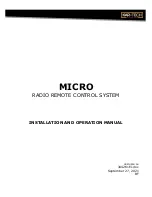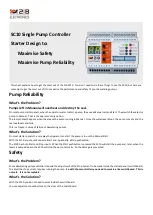
217
Linear Interpolation
Section 8-6
8-6
Linear Interpolation
8-6-1
Overview
Two or more axes can be designated for linear interpolation work. Use the
axis designation in the positioning sequence to designate the axes for linear
interpolation operations. The target speed set in the positioning sequence for
the starting axis will become the interpolation speed.
For details regarding positioning sequence settings, refer to
8-4 Positioning
Sequences
.
The speeds of the axes during linear interpolation are determined according
to the following equations. (The same equations can also be applied for 2 or
3-axis operation.)
Example: Linear interpolation for simultaneous 4-axis operation
X-axis speed = Interpolation speed
×
Movement of X axis
÷
Total movement
Y-axis speed = Interpolation speed
×
Movement of Y axis
÷
Total movement
Z-axis speed = Interpolation speed
×
Movement of Z axis
÷
Total movement
U-axis speed = Interpolation speed
×
Movement of U axis
÷
Total movement
When the interpolation speed is separated in the way shown above, if the
speed for any axis is greater than its maximum speed setting, the interpolation
speed is automatically lowered so that the speed for that axis (or axes) is
equal to the maximum speed setting.
With this PCU, the interpolation speed can be set up to 1,000 pps so as to
allow each axis to move simultaneously at its maximum speed (500 pps)
whilst operating according to linear interpolation. If a value exceeding 1,000
pps is set, a speed error (error codes 1500 to 1599) will be generated.
The maximum distance the can be moved in one linear interpolation operation
(i.e., for one sequence) is 2,147,483,520 (7FFFFFF80 Hex) pulses. If a linear
interpolation operation that exceeds this value is specified, an overflow error
(error code 8601) will be generated. For example, moving from the point (X, Y)
= (–1073741823, 0) to the point (X, Y) = (1073741823, 1) would, using the
above equations, entail moving a total distance of 2,147,483,647 (7FFFFFFF
Hex) pulses. This value exceeds 2,147,483,520 and so if an operation to
move between these 2 points using linear interpolation was specified, an
overflow error (error code 8601) would be generated.
Y axis
Start point
X axis
Interpolation end point
v: Interpolation speed
Total movement = (Movement of X axis)
2
+ (Movement of Y axis)
2
+ (Movement of Z axis)
2
+ (Movement of U axis)
2
Содержание CJ1W-C113 - REV 02-2008
Страница 1: ...Position Control Units Cat No W397 E1 07 SYSMAC CJ1W NC113 213 413 133 233 433 OPERATION MANUAL ...
Страница 2: ...CJ1W NC113 213 413 133 233 433 Position Control Units Operation Manual Revised February 2008 ...
Страница 3: ...iv ...
Страница 13: ...xiv ...
Страница 15: ...xvi ...
Страница 19: ...xx ...
Страница 27: ...xxviii Conformance to EC Directives 6 ...
Страница 43: ...16 Control System Principles Section 1 7 ...
Страница 47: ...20 Basic Procedures Section 2 ...
Страница 139: ...112 Examples of Parameter Settings Section 4 9 ...
Страница 173: ...146 Transferring Data with CX Position Section 5 7 ...
Страница 223: ...196 Sample Program Section 7 7 ...
Страница 259: ...232 Sample Program Section 8 10 ...
Страница 293: ...266 Easy Backup Function Ver 2 0 or later Section 9 11 ...
Страница 369: ...342 Reading Error Information with CX Position Section 11 8 ...
Страница 385: ...358 Common Parameter Area Appendix C ...
Страница 399: ...372 Parameter Coding Sheets Appendix E ...
















































